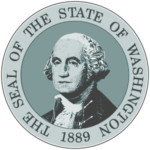Educator preparation programs are initially approved to serve and instruct candidates for a designated period of time. During this period of time, the program operates in a status of limited approval. Before limited approval expires, PESB convenes a review team to conduct a virtual site visit to determine if the program is compliant with preparation program requirements. Programs are assessed based on performance relative to program standards and the ability to demonstrate continuous improvement. The Board uses review team findings to make a final approval status decision. Initial review was formerly called the 27-month review.
PESB’s role
The Professional Educator Standards Board (PESB) ensures that Washington’s educator preparation programs are preparing diverse and classroom-ready educators. To do this, we regulate preparation program approval and review. Programs are approved if they have demonstrated potential to uphold standards and requirements, support local and state educator workforce shortages, and advance equity in educator preparation.
What is the purpose of the review?
- An approval status decision by the PESB board.
Program evaluation questions
- How closely do program processes and outcomes align with PESB educator preparation program standars?
- How is the program demonstrating outputs, processes, and outcomes?
- How is the program assessing performance to design, develop, and implement continuous improvement initiatives?
What is the review process?
The initial review includes pre-review activities, the virtual site visit, post-review activities, and a presentation to the PESB board. Before, during, and after the site visit, the review team will use the following data sources to examine the program and make recommendations on each standard area:
- Performance of program indicators. The review will include all available annual analyses of data provided to PESB by the preparation program.
- Standards alignment. Program evidence demonstrating alignment with standards and state requirements will be compiled in secure shared folders. Program providers, PESB staff, and review team members will have access to the files and review the evidence in two virtual pre-site visit meetings. PESB staff will offer program providers guidance regarding the evidence required, how it may be gathered and used, and how it must be submitted.
- Continuous improvement. The review team will evaluate whether and to what degree the program under review has demonstrated continuous improvement in its implementation and outcomes. Program providers will adapt programming based on experiences during initial limited approval and beyond.
Review report
Following the site visit and two virtual post-site visit meetings, the PESB staff will work with the review team to compile a report detailing their findings on all program standards as met, unmet, exceeded, or undecided. The program will have the opportunity to make a response in writing. The program team and PESB staff will present the report and response to the Board. Following the presentation, board members will discuss and make an approval status decision:
- Fully approve the program: the program would enter the ongoing review cycle
- Extend the program’s limited initial approval status: defined under WAC 181-78A-110 and would trigger a focused follow-up report, and subsequent Board reapproval decision
- Rescind program approval: defined under the revisions to WAC 181-78A-110 and 115
Who is the report for?
- The Professional Educator Standards Board: The primary audience of the initial review report is PESB board members, who will use the report to make approval decisions. Board members will also use review reports to assess and further explore, quality and effectiveness of the state’s educator preparation system and make policy decisions related to standards, approval, and review.
- The preparation program being reviewed: The initial review provides outside insight by focusing on critical areas of practice and highlighting promising approaches. The review addresses all areas of program standards, program leaders’ goals, and areas of practice identified through evaluation.
- The educator preparation field: Another key audience for the initial program review is the wider field of educator preparation. Findings, commendations, and recommendations of the review team will serve to inform the wider field of educator preparation and prompt further discussion and dissemination of promising practices.
What is the review schedule?
When new programs are initially approved, they are considered to be in limited approval status. For most program types, the initial review takes place about 27 months after a program’s initial approval.
Your review season will be communicated when your program is initially approved. PESB staff will contact your program prior to the expiration of your initial approval to begin coordinating the review.
Why 27-months?*
Twenty-seven (27) months is strategic duration of time for the initial program review. This period of time allows for two annual academic cycles and two annual cycles of program data. The two academic cycles with multiple years of data submission is sufficient to provide insight into how programs are aligning with PESB program standards.
*This time period between initial approval and initial review varies for School Counselor and School Psychologist preparation programs due to national accreditation timelines. PESB staff work with program leaders to coordinate review schedules.
